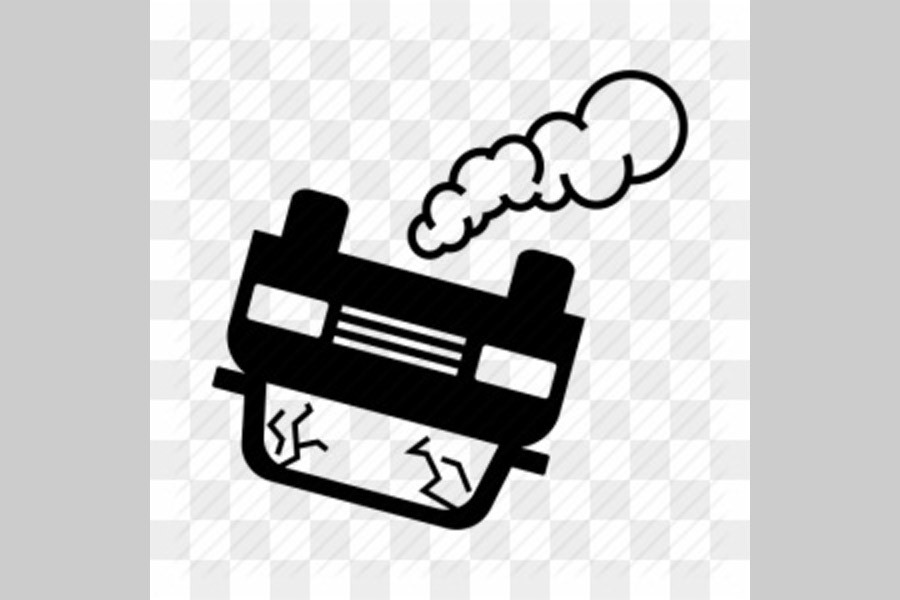The statistics, presented by the Jatri Kallyan Samity, a passengers' welfare body late last week, are quite disturbing given the country's total number of registered motor vehicles and the length of roads and highways.
According to the statistics compiled by the Samity, a total of 7,221 people were killed and 15,446 others injured in 5,514 road accidents across the country in 2018.
These figures are unlikely to leave any impact on the people who are in-charge of maintaining discipline in the road transport sector, owners and workers of buses and trucks responsible for most accidents on roads and highways and the officials responsible for traffic management.
What is more disturbing is that common people who are the main victims of road accidents, surely, would not take the information dished out by the Jatri Kallayan Samity seriously.
There is a strong propensity among the people to take the issue concerning road accidents lightly. And this is evident from their attitude while they use the roads riding various modes of public transport or cross distance on foot. They behave erratically as drivers of public buses or other vehicles do. Many of them are seen alighting from or getting on board buses right in the middle of the road, risking their lives.
Jaywalking has again emerged as a serious problem. Pedestrians are seen crossing roads using every available space. They do commit the offence even scaling up high road-dividers and ignoring speeding motor vehicles. Such widespread violation of traffic rules also slows down the movement of vehicles and contributes to traffic congestions.
When two vehicles get involved in an accident on the road, the driver responsible for it tries to get away saying that such mishap can happen on the roads and there is no need to take it seriously.
But should we be so indifferent to road accidents that are killing 15 to 20 people per day?
Take the case of 30-year old Shihabul. On the day the Jatri Kallyan Samity unveiled the road-accident statistics, this young man, who had expressed solidarity with the 'Safe Road Movement', waged in the month of July last year in Dhaka, through social media was killed in a road accident. He was hit by a speeding pickup van on Nabinagar-Chandra highway. The van was using a wrong route. Seven more people, including a university student, also died in road accidents on that day across the country.
The situation now stands like this: road-safety experts and newspapers would continue to talk or write volumes about road accidents, minister in-charge of road transport, accompanied by media men, would visit some spots on roads and highways and BRTA offices on occasions and the metropolitan police authorities would organise traffic weeks or fortnights at regular intervals while more and more people will continue to die under the wheels of speeding buses and trucks!
One man was largely blamed for most ills in the transport sector. It is not very difficult for anyone to guess who that man could be. That person is not in powerful position anymore. But is there any sign of improvement following his departure as far as road accidents are concerned?
There is no denying that the individual's backing heightened the level of defiance among transport owners and workers.
But the fact remains that there are other actors who draw both power and unearned income from the transport sector. These actors in a planned manner have been fuelling anarchy in the sector to take things to their advantage.
The traffic situation in Dhaka city draws more attention than what is happening in other areas of the country for understandable reasons. But the number of deaths on Dhaka streets is fewer compared with those on roads and highways across the country.
Experts do very often talk about traffic problems of Dhaka city. They calculate the economic loss, in terms of lost man-hour and cost of fuel. But they have not done much research to locate the reasons for rising number of accidents on highways. The government, too, is not very serious about removing the factors that have been contributing to road accidents on highways.
For instance, the relevant ministry passed an order banning the movement of small and slow-moving vehicles, both manual and motorised, on major highways. But it, disappointedly, failed to enforce the ban. All types of vehicles are moving freely.
The government is supposed to employ an adequate number of highway police and vehicles for them to enforce ban and maintain order on highways. But the highway police are hardly seen in action. Rather some vehicles belonging to the Highway Police are seen plying the Dhaka streets.
There is no denying that problems of the road transport sector have become very complex because of the neglect, deliberate or otherwise, for decades. Even with sincere efforts, it would be really difficult to find an appropriate solution. But this should not be the reason to avoid the task of resolving the problems that have been taking thousands of lives every year. The government should constitute a high-powered commission giving it the task of making an in-depth study and offering appropriate recommendations.


